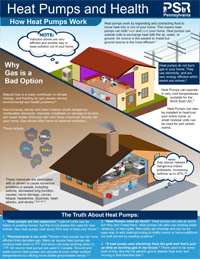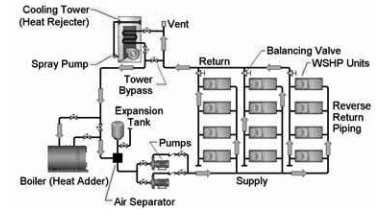To execute a hotness pump cycle the accompanying things are required: a high-temperature heat exchanger, a low-temperature heat exchanger and a hotness move medium that transports heat from the low-temperature source to the high-temperature sink. Presently, the most well-known plan includes four primary parts: evaporator, condenser, blower and extension valve. The hotness move medium is called a refrigerant.
Evaporator HPcykeln_text
The evaporator is a low-temperature heat exchanger where the refrigerant enters as a low-temperature fluid, ingests Le climat et les clims reversibles from the hotness source by vanishing at a low strain and leaves as a low-temperature fume.

Blower
In the blower, the low tension of the low-temperature refrigerant from the evaporator is raised to a strain that is adequately high to match the ideal gathering temperature in the condenser. During pressure, the tension, as well as the temperature of the refrigerant, will increment.
Condenser
The condenser is a high-temperature heat exchanger where the refrigerant enters as a high-temperature fume, rejects hotness to the hotness sink by buildup at high tension and leaves as a high-temperature fluid.
Extension valve
On its re-visitation of the evaporator from the condenser the high-temperature, high-pressure fluid refrigerant should be changed to the low-temperature, low-pressure fluid that enters the evaporator. This is typically accomplished by a choking gadget known as the development valve. At the point when the hot fluid goes through this valve, not exclusively will its tension be diminished and yet its temperature will decrease. As the strain drops, the refrigerant begins to vanish in the valve and the hotness of dissipation is taken from the actual refrigerant which makes its temperature decrease and the outcome is a low-temperature, low-pressure blend of fluid and fume.
Why hotness pumps are an innovation for what’s to come
Maintainable energy frameworks of things to come will depend on two significant standards: proficient end-use and effective utilization of renewables. In this situation, the hotness pump is a splendid development that is perfectly versatile for a huge number of utilizations connecting with both effective end-use and sustainably supplies. The energy source utilized by a hotness pump is sustainable power from the ground, air, water and waste hotness sources.
By adding a modest quantity of drive energy, a hotness pump can move heat from a low temperature to a high temperature. This implies that a similar piece of gear can be utilized to eliminate heat from a space (cooling) toward one side while simultaneously adding hotness to another space (warming).
The most predominant utilization of hotness pumps is for cooling, for example, the normal family cooler or climate control system, however progressively heat pumps are likewise used to overhaul hotness to helpful warming temperatures. In applications, while both warming and cooling are required this is a mutually beneficial arrangement that practically duplicates the expense viability of the establishment.
As indicated by the International Energy Agency, IEA, the worldwide CO2 emanations must decrease by more than one-half in correlation with the 2015 levels to restrict the expansion in worldwide temperature and urban communities are at the core of the decarbonization exertion. The test is to accomplish this decrease while simultaneously energy request is ascending from a rising number of both private and business structures. This challenge can be met by the hotness pump innovation, utilizing it in a wide scope of utilizations as far as warming, cooling and cooling. Heat pumps are likewise a reasonable answer for retrofit structures. Consequently, heat pumps have enormous potential in adding to the decrease of worldwide CO2 outflows.
